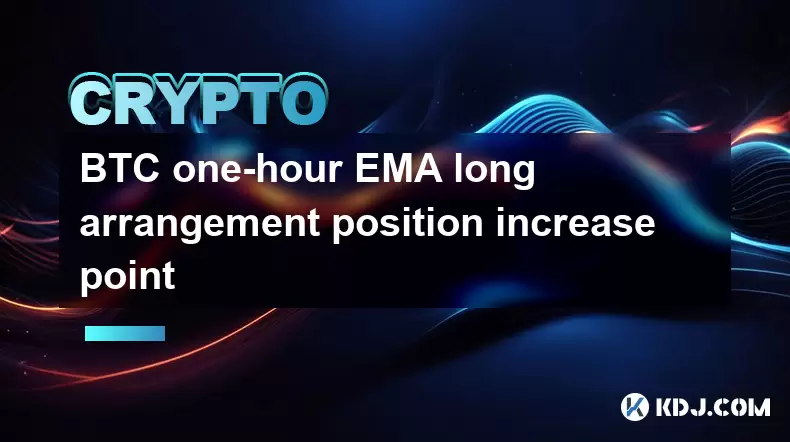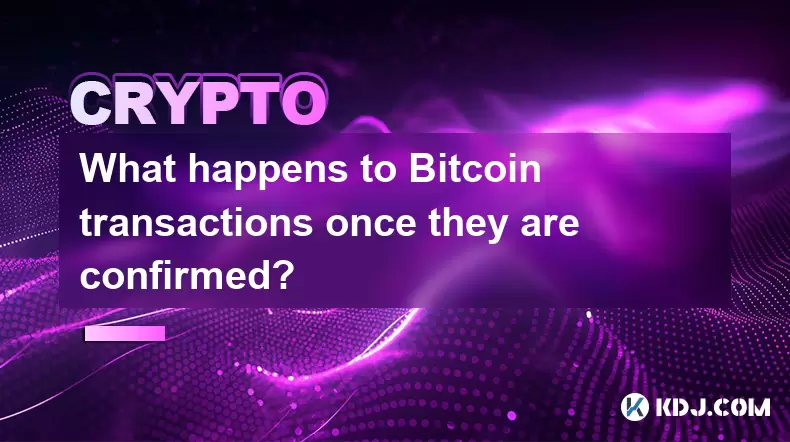-
 Bitcoin
Bitcoin $116700
0.24% -
 Ethereum
Ethereum $3973
4.34% -
 XRP
XRP $3.283
7.68% -
 Tether USDt
Tether USDt $1.000
0.01% -
 BNB
BNB $789.8
2.27% -
 Solana
Solana $176.2
3.31% -
 USDC
USDC $0.9999
0.00% -
 Dogecoin
Dogecoin $0.2238
5.14% -
 TRON
TRON $0.3389
-0.51% -
 Cardano
Cardano $0.7907
4.03% -
 Stellar
Stellar $0.4527
10.02% -
 Hyperliquid
Hyperliquid $41.07
4.27% -
 Sui
Sui $3.794
1.77% -
 Chainlink
Chainlink $19.49
10.40% -
 Bitcoin Cash
Bitcoin Cash $580.9
0.74% -
 Hedera
Hedera $0.2617
4.32% -
 Avalanche
Avalanche $23.41
3.67% -
 Ethena USDe
Ethena USDe $1.001
-0.03% -
 Litecoin
Litecoin $122.4
1.38% -
 Toncoin
Toncoin $3.364
1.49% -
 UNUS SED LEO
UNUS SED LEO $8.988
0.37% -
 Shiba Inu
Shiba Inu $0.00001295
2.82% -
 Uniswap
Uniswap $10.62
5.75% -
 Polkadot
Polkadot $3.922
4.46% -
 Dai
Dai $1.000
0.01% -
 Bitget Token
Bitget Token $4.494
2.15% -
 Monero
Monero $268.0
-1.30% -
 Cronos
Cronos $0.1523
3.68% -
 Pepe
Pepe $0.00001127
4.43% -
 Aave
Aave $285.4
4.85%
BTC one-hour EMA long arrangement position increase point
BTC one-hour EMA long arrangement, using 9, 21, and 55 periods, signals strong bullish trends, prompting traders to increase long positions with careful risk management.
Jun 01, 2025 at 11:56 pm

Introduction to BTC One-Hour EMA Long Arrangement
The BTC one-hour Exponential Moving Average (EMA) long arrangement is a popular technical analysis tool used by traders to identify potential entry points for long positions in Bitcoin. The EMA is a type of moving average that places a greater weight and significance on the most recent data points, making it more responsive to new information. When multiple EMAs are arranged in a specific order on a one-hour chart, it can signal a strong bullish trend, prompting traders to consider increasing their long positions.
Understanding Exponential Moving Averages
Exponential Moving Averages (EMAs) are calculated by applying a weighting factor to the most recent price data, which decreases exponentially for older data points. This makes EMAs more sensitive to recent price changes compared to Simple Moving Averages (SMAs). In the context of Bitcoin trading, common EMA periods used are the 9, 21, and 55 periods, although traders can adjust these based on their strategy and timeframe.
Identifying the Long Arrangement on a One-Hour Chart
To identify a long arrangement on a one-hour chart, traders look for the shorter-term EMAs to be positioned above the longer-term EMAs. For instance, a bullish setup would typically show the 9-period EMA above the 21-period EMA, which in turn is above the 55-period EMA. This arrangement suggests that the recent price action is more bullish than the longer-term trend, indicating potential strength in the current uptrend.
Steps to Increase Long Positions Using EMA Long Arrangement
When a trader decides to increase their long position based on the EMA long arrangement, they should follow these detailed steps:
- Monitor the EMA Arrangement: Regularly check the one-hour chart to ensure the 9, 21, and 55-period EMAs are in the desired bullish order.
- Confirm with Other Indicators: Use additional indicators like the Relative Strength Index (RSI) or Moving Average Convergence Divergence (MACD) to confirm the bullish momentum.
- Set Entry Points: Identify potential entry points where the price action shows a clear breakout above resistance levels or a retest of support levels.
- Determine Position Size: Calculate the appropriate position size based on your risk management strategy and the current market volatility.
- Execute the Trade: Place the buy order at the identified entry point, ensuring that stop-loss and take-profit levels are set according to your trading plan.
- Monitor and Adjust: Continuously monitor the trade and adjust stop-loss levels as the price moves in your favor to lock in profits.
Risk Management and Stop-Loss Strategies
Effective risk management is crucial when increasing long positions based on EMA arrangements. Traders should always set a stop-loss order to limit potential losses. A common approach is to place the stop-loss just below the most recent swing low or a significant support level. Additionally, trailing stop-losses can be used to protect profits as the price continues to rise.
Analyzing the Impact of Market Volatility
Market volatility can significantly affect the reliability of EMA signals. During periods of high volatility, false signals may occur more frequently, leading to potential losses. Traders should consider using volatility indicators like the Average True Range (ATR) to gauge the current market conditions and adjust their trading strategy accordingly. Lower volatility periods may provide more reliable EMA signals, while higher volatility may require a more cautious approach.
Practical Example of EMA Long Arrangement in Action
To illustrate how the EMA long arrangement can be used in practice, consider the following scenario:
- BTC/USD One-Hour Chart: The 9-period EMA is at $45,000, the 21-period EMA is at $44,500, and the 55-period EMA is at $44,000.
- Bullish Confirmation: The RSI is above 50, and the MACD shows a bullish crossover.
- Entry Point: The price breaks above a resistance level at $45,500.
- Position Sizing: Based on a 1% risk per trade, the trader decides to buy 0.1 BTC.
- Stop-Loss: Set at $44,800, just below the recent swing low.
- Take-Profit: Set at $46,500, targeting a resistance level.
In this example, the trader would increase their long position at the identified entry point, with a clear risk management strategy in place.
FAQs
Q1: Can the EMA long arrangement be used on other cryptocurrencies?
A1: Yes, the EMA long arrangement can be applied to other cryptocurrencies. However, traders should adjust the EMA periods and other parameters based on the specific volatility and trading characteristics of the cryptocurrency they are analyzing.
Q2: How often should I check the EMA arrangement on the one-hour chart?
A2: It is recommended to check the EMA arrangement at least every hour, but more frequent checks may be necessary during periods of high market volatility or when significant price movements are expected.
Q3: What should I do if the EMA arrangement breaks down after entering a long position?
A3: If the EMA arrangement breaks down, it may signal a potential reversal. Traders should consider exiting the position or adjusting their stop-loss to minimize losses. It's important to have a predefined exit strategy in place before entering any trade.
Q4: Are there any other technical indicators that can complement the EMA long arrangement?
A4: Yes, other technical indicators that can complement the EMA long arrangement include the Bollinger Bands, Fibonacci retracement levels, and volume indicators. These can provide additional confirmation of the bullish trend and help identify more precise entry and exit points.
Disclaimer:info@kdj.com
The information provided is not trading advice. kdj.com does not assume any responsibility for any investments made based on the information provided in this article. Cryptocurrencies are highly volatile and it is highly recommended that you invest with caution after thorough research!
If you believe that the content used on this website infringes your copyright, please contact us immediately (info@kdj.com) and we will delete it promptly.
- Navigating the Crypto Market in 2025: Smart Decisions for the Meme Supercycle
- 2025-08-09 08:50:12
- DeFi, Tokenized Stocks, and NFTs: A Wild Ride in the Crypto Cosmos
- 2025-08-09 08:30:11
- AERO Price Skyrockets: Aerodrome Finance Sees Massive Surge Amid Coinbase Buzz
- 2025-08-09 08:55:19
- Coinbase, Cosmos, and dYdX: Navigating the Crypto Currents
- 2025-08-09 06:30:16
- BNB Price, Altcoins, and Predictions: What's the Buzz?
- 2025-08-09 06:30:16
- Crypto Presale Projects Primed for Gains in 2025: A New Yorker's Take
- 2025-08-09 06:50:15
Related knowledge

Can the Bitcoin protocol be changed?
Aug 07,2025 at 01:16pm
Understanding the Bitcoin ProtocolThe Bitcoin protocol is the foundational set of rules that govern how the Bitcoin network operates. It defines every...

What happens to Bitcoin transactions once they are confirmed?
Aug 09,2025 at 05:22am
Understanding Bitcoin Transaction ConfirmationWhen a Bitcoin transaction is initiated, it is broadcast to the network and placed in a pool of unconfir...

How are Bitcoin transactions verified?
Aug 08,2025 at 06:57am
Understanding Bitcoin Transaction VerificationBitcoin transactions are verified through a decentralized network of nodes and miners that ensure the le...

How does decentralization make Bitcoin secure?
Aug 08,2025 at 09:35am
Understanding Decentralization in BitcoinDecentralization is a foundational principle of Bitcoin's architecture and plays a critical role in its secur...

What are some common misconceptions about Bitcoin?
Aug 07,2025 at 07:22pm
Bitcoin is Just Like Regular MoneyA widespread misconception is that Bitcoin functions identically to traditional fiat currencies like the US dollar o...

What is the role of nodes in the Bitcoin network?
Aug 08,2025 at 04:14pm
Understanding the Function of Nodes in the Bitcoin NetworkNodes are fundamental components of the Bitcoin network, serving as the backbone that ensure...

Can the Bitcoin protocol be changed?
Aug 07,2025 at 01:16pm
Understanding the Bitcoin ProtocolThe Bitcoin protocol is the foundational set of rules that govern how the Bitcoin network operates. It defines every...

What happens to Bitcoin transactions once they are confirmed?
Aug 09,2025 at 05:22am
Understanding Bitcoin Transaction ConfirmationWhen a Bitcoin transaction is initiated, it is broadcast to the network and placed in a pool of unconfir...

How are Bitcoin transactions verified?
Aug 08,2025 at 06:57am
Understanding Bitcoin Transaction VerificationBitcoin transactions are verified through a decentralized network of nodes and miners that ensure the le...

How does decentralization make Bitcoin secure?
Aug 08,2025 at 09:35am
Understanding Decentralization in BitcoinDecentralization is a foundational principle of Bitcoin's architecture and plays a critical role in its secur...

What are some common misconceptions about Bitcoin?
Aug 07,2025 at 07:22pm
Bitcoin is Just Like Regular MoneyA widespread misconception is that Bitcoin functions identically to traditional fiat currencies like the US dollar o...

What is the role of nodes in the Bitcoin network?
Aug 08,2025 at 04:14pm
Understanding the Function of Nodes in the Bitcoin NetworkNodes are fundamental components of the Bitcoin network, serving as the backbone that ensure...
See all articles

























































































